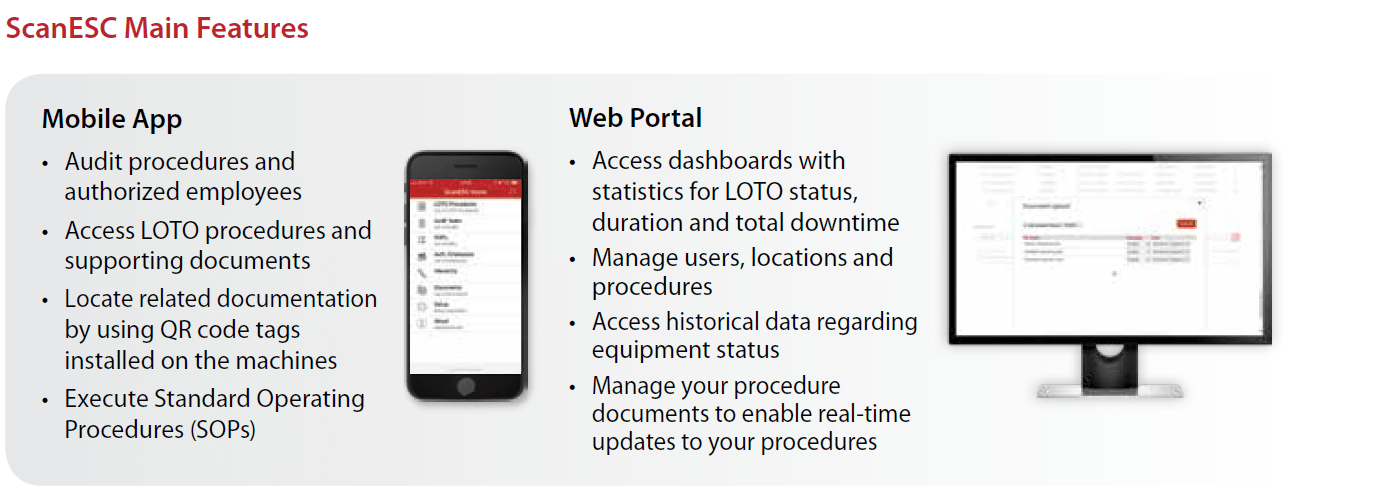Many manufacturers today are finding themselves in very different situations when it comes to lockout/tagout compliance. I want to share a recent success story, along with the five key components that OSHA will expect companies to have in place. Where are you at regarding compliance? Having accurate written lockout/tagout procedures is a great start. But as you can see, LOTO procedures are just one of five required components to a LOTO program.
Your program is only as good as your lockout/tagout procedures. Required components for a compliant program include:
Your organization’s policy is the foundation of your lockout/tagout procedures. The policies in your program should be unique to each facility and change and adapt over time.
Establishing machine-specific lockout/tagout procedures ensure compliance while encouraging workers to follow them. You must create procedures for every piece of equipment in each facility and install them right at the point of use.
Put procedures in action with employee training. Authorized (those applying locks) and affected (those in the area during lockout) employees need training to ensure program compliance—and don’t forget contractors working on your site. Anyone who is in proximity to a lockout will need training.
Compliant lockout/tagout procedures must include the proper locks and devices. You must have enough locks, identification tags, and isolation devices to address each isolation point (e.g., ball valves, gate valves, breaker) on your equipment in each facility. And it’s a good idea to use uniform makes and colors.
Maintain program integrity with yearly audits. These audits will ensure that your devices are compliant and that your employees are following set procedures. And be sure to keep your audit data to demonstrate compliance.
Working in partnership with Rockwell Automation®, we recently helped a large manufacturer located in Vermont implement a best-in-class LOTO program. This company was working with OSHA at the time and decided to reach out for a solution. Upon meeting with the customer, we found out that OSHA gave them a directive: Put a LOTO program in place or citations will follow. At the time, this facility only had one out of the five required components implemented: a corporate policy. As we discussed the customer’s specific business issues, we discovered they had approximately 2,000 pieces of equipment that would need written procedures, but that was a guess on their part.
To design a solution that ensures complete compliance, we recommended a facility assessment to the customer. Facility assessments entail a Lockout/Tagout Engineer being dispatched to the customer site to thoroughly review the equipment to capture everything that is required by law. After spending three days on site, we determined that 2,724 machines will need a written lockout/tagout procedure implemented.
Once we were aware of how many procedures were needed, we then started to explore managing the program moving forward. So far, we covered two of the five LOTO components: corporate policy and machine-specific procedures. The customer then asked, “How do I manage to stay current on our annual audits? It sounds like that could be a full-time job alone, and we don’t have the people or resources?”
Luckily, there’s an inexpensive option with Rockwell Automations LOTO solution. ScanESC is a web-based platform that allows lockout/tagout procedures auditing from any mobile device by simply scanning the QR code located on the machine or procedure. By scanning the QR code, users can pull up the procedure in question to either perform an audit or access the procedure and documentation to perform LOTO on the equipment. As equipment is going through LOTO, users can also confirm the audit, if authorized to do so. The ScanESC website will then track when the equipment was last audited, the due date for the next audit, and when and how long the machine was locked out last and by whom. This solution provides complete traceability!

© Rockwell Automation
This customer ultimately decided to go with this solution, which entailed 2,724 custom lockout/tagout procedures to be written for various size pieces of equipment. The final customer solution also included ScanESC to ease the burden of managing their program internally moving forward.
With every LOTO project we perform, training is always included based on the number of procedures. In this case, the facility has access to 16 hours of onsite training from the LOTO engineer assigned to the project and an additional 12 months of online/remote training.
In this example, the customer was able to work with one company to address writing procedures, training, and ensuring an audit plan is in place. Once this project is wrapped up, the facility will have a robust LOTO program that will be easy to manage in the future. Are you ready to make your lockout/tagout procedures compliant? Contact us today!